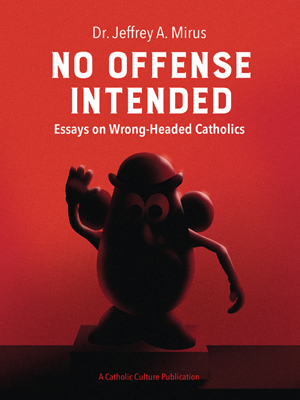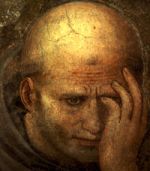Up to Date on the Shroud
By Dr. Jeff Mirus ( bio - articles - email ) | May 06, 2010
With the Holy Shroud on display in Turin until May 23rd, it makes sense to comment on some of the newer ideas concerning its authenticity. Tradition holds that the Shroud is the burial cloth of Jesus Christ, and bears the miraculous imprint of his body. Readers may remember that back in 1988 a group of scientists performed Carbon-14 dating tests on the shroud that suggested it originated in the late middle ages. New evidence calls that conclusion into doubt.
Free eBook:

|
| Free eBook: No Offense Intended |
During a conference on the Shroud in the Jubilee year 2000, scientists were divided on the reliability of the 1988 tests, for three reasons: First, dating an object buried in the ground is very different than dating an object which has been cared for and treated in various ways. Second, a very small sample was taken from the edge of the shroud for dating purposes, which now appears to be from a section that had been repaired much later than the original cloth was made. Third, the shroud has been damaged by fire and even boiled at various times in its history, which can have an impact on Carbon-14 dating techniques.
Another problem with the dating is that scientists cannot figure out how the image on the shroud was made, though it seems related to some process of radiation. This accords with Christ’s glorified body, but it is difficult to imagine how, short of a miracle, anyone could have produced it in the 14th century. Moreover, there appears to be a relationship between the Shroud of Turin and the Holy Sudarium (Holy Face of Oviedo), which bears blood stains of the same type as the Shroud (type AB, with very similar DNA structure), and which is known to have arrived in Oviedo, Spain in the ninth century.
Perhaps the best evidence independent of tradition for the Shroud’s authenticity as the burial cloth of Jesus Christ is the faint writing that was discovered in 1980, consisting of Greek, Latin and Aramaic words. Barbara Frale, a historian working in the Vatican Secret Archives, has thoroughly studied this writing. In her book La Sindone di Gesù (The Shroud of Jesus of Nazareth), Frale argues that the style of the script is similar to that used in ancient documents and that the imprinted text is a residue from papyrus scrolls once attached to the cloth (apparently burial certificates).
It so happens that at the time of the crucifixion it was a Jewish custom that anyone who was executed would be subjected to the symbolic disdain of being buried in a common grave or far from their relatives for 12 months; scrolls were used to identify their enshrouded corpses. But in Jesus’ case, though the scrolls would have been prepared, Pontius Pilate released the body to Joseph of Arimathea and so the burial in a common grave did not take place. As Frale noted in an interview:
The inscriptions say: “Jesus of Nazareth, 16th year of Tiberius’ reign.” Then comes a Latin inscription: “Innecem”, i.e. “sentenced to death.” Then a Greek one, probably: “Oye kiato,” i.e., removed in the ninth hour, i.e. the time when the corpses of crucified persons had to be removed from the cross. Then there is another word Adar, i.e., the date on which the body of the person executed could be returned to his family. In the year 30, Adar occurred 12 months after Easter, which is perfectly in line with historical conjectures based on the Gospels.
Clearly the study of the Shroud is not over; there may be more to discover. But the evidence for its authenticity is getting stronger, not weaker, with the passage of time and the application of modern examination techniques.
All comments are moderated. To lighten our editing burden, only current donors are allowed to Sound Off. If you are a current donor, log in to see the comment form; otherwise please support our work, and Sound Off!
-
Posted by: shenanigans03650 -
May. 07, 2010 11:44 PM ET USA
I really appreciated this update -- thank you! Keep us posted, as always & God bless.
-
Posted by: nancyellis541946 -
May. 07, 2010 7:32 PM ET USA
I thought that just recently some individuals managed to replicate the image on the Shroud with materials available in the Middle Ages. Could you speak to that?







